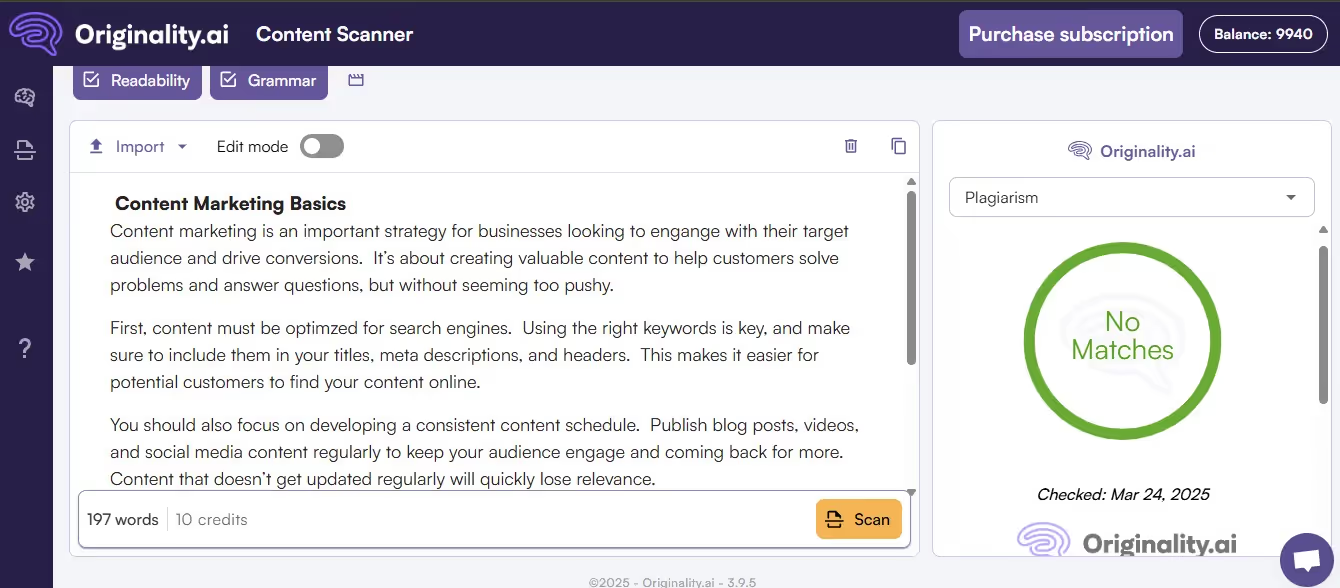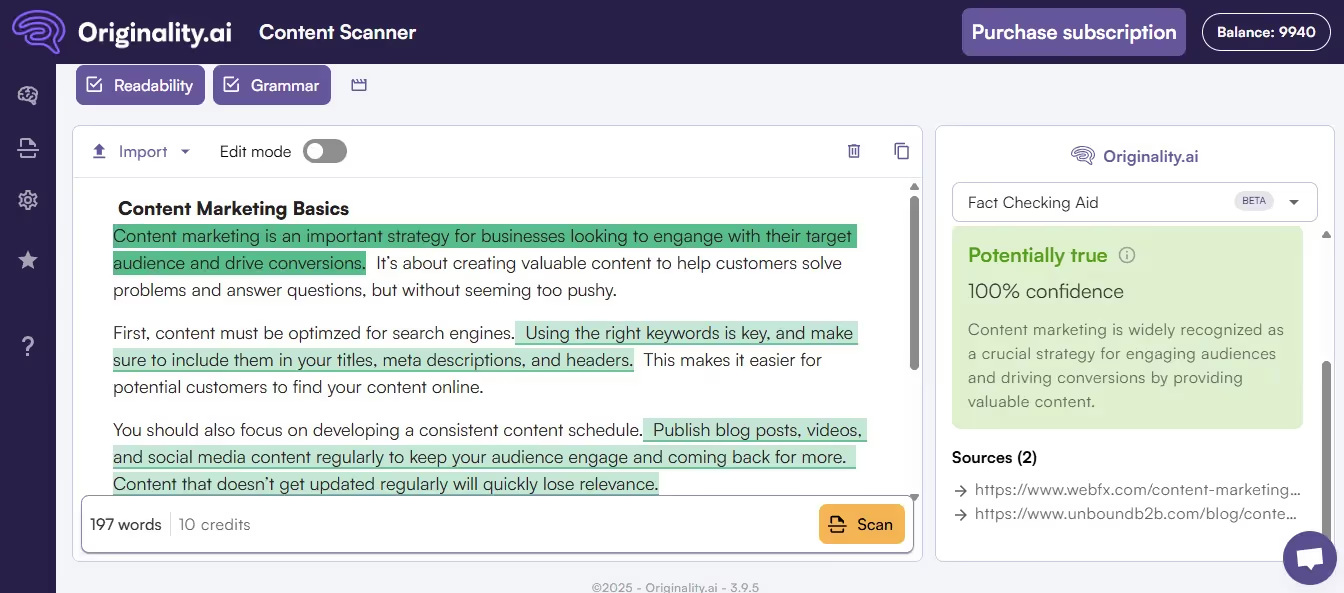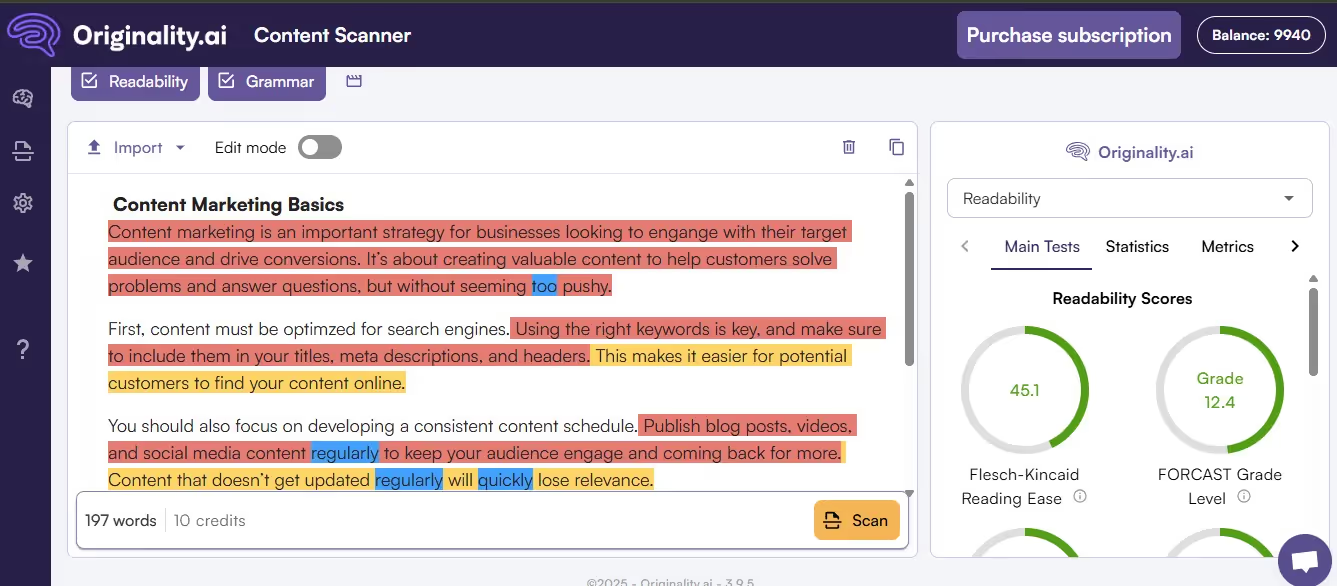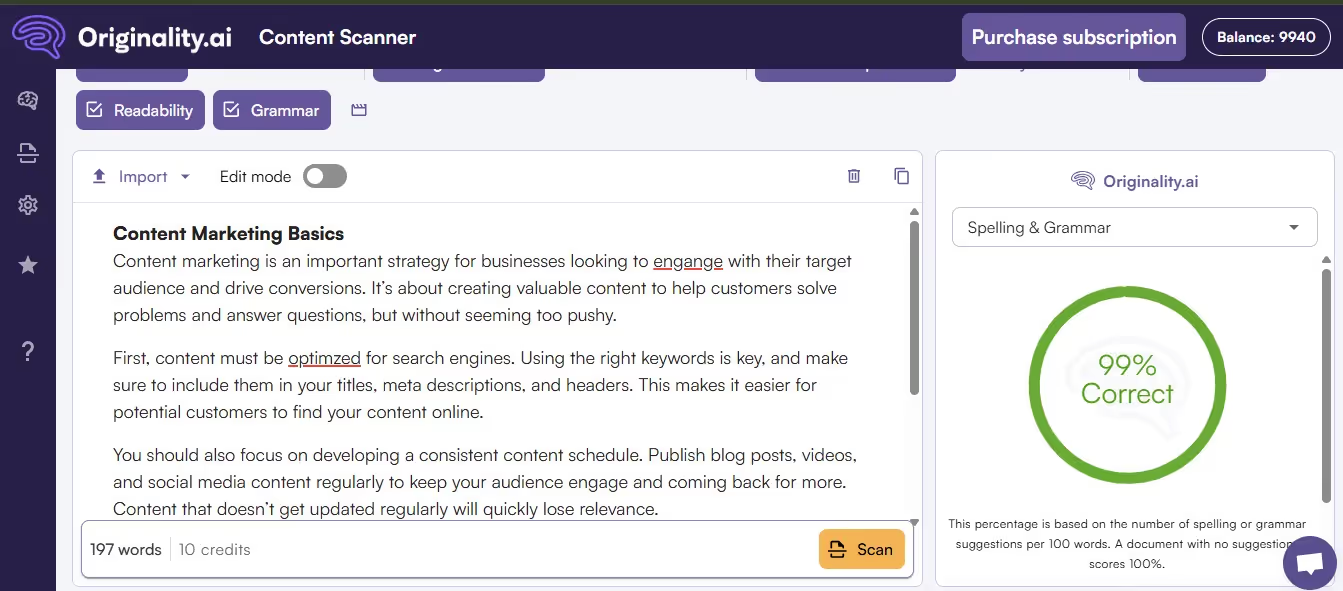With tools like artificial intelligence (AI) making it easier than ever to create and share content online, separating human-written articles from AI generation has become a real challenge.
This poses a number of concerns including plagiarism, the spread of misinformation, and low-quality content that seems to be virtually indistinguishable from high-quality work, especially considering humans struggle to identify AI text.
Introducing Originality.ai’s patented breakthrough technology, a solution designed to tackle these challenges head-on.
As an all-in-one text analysis and verification system, Originality.ai has created a tool that gives businesses, educators, and content creators the confidence they need to maintain the authenticity and trustworthiness of their work.
Read on to learn about AI patents, Originality.ai’s latest innovation, and how you can use it to ensure the source and quality of content.
In the context of AI, a patent is a type of intellectual property (IP) that grants an inventor the exclusive right to prevent others from making, using, or selling their AI-related invention or technology.
According to the USPTO to qualify for a patent, the invention must meet the following four conditions:
Sure, it can be a bit of a process (according to the United States Patent and Trademark Office (USPTO) Patents Pendency data, it typically takes around two years for them to review and make a final decision about a patent application). However, if you believe in your product and its effectiveness, it's worth the wait to protect it.
That’s how we felt at Originality.ai.
On March 18, 2025, Originality.ai received a patent for its innovative method and system to help users analyze and verify text. Unlike similar products often with a singular focus, Originality.ai’s patented technology combines multiple checks into a simple, comprehensive system for quick and easy online content verification.
The key features of Originality.ai’s patent include:
Essentially, Originality.ai has created a one-stop shop for text verification. Users no longer need to sign up for multiple products from multiple brands to check the source, accuracy, or even rankability of content–they can do it all in one place.
However, the convenience factor isn’t the only thing to like about the Originality.ai system. It’s also easy to use.
Although it performs many different checks, the first few steps to using Originality.ai’s patented technology are the same:
That’s it! Simply check off the tests you’d like to perform, and you’re ready to verify your content.
Now, let’s run through each check with a ChatGPT-generated article on “content marketing basics” to see how it works.
Let’s begin with the AI check. Originality.ai’s AI detector analyzes a text for AI and gives you a confidence score based on its assessment. Here’s what it came up with for our ChatGPT-generated article:

As you can see, Originality.ai’s AI checker is 100% confident that the text is likely the result of AI. The highlighted text shows a further breakdown of its confidence score, with the darker red representing about 90% confidence and orange 70%.
For more information on interpreting these percentages, check out our article on AI vs human content detection scores.
Next, let’s check out Originality.ai’s plagiarism checker. In this case, the ChatGPT-generated article shows no plagiarism matches.

If Originality.ai had detected plagiarism, though, it would do three things:
You’d then be able to go in and verify the sources accordingly.
Originality.ai’s fact checker can save editors a ton of research, especially if they’re checking AI-generated content. Let’s see if our ChatGPT text contains any kind of AI hallucinations or factual errors.

Looks like our first sentence is in the clear! Originality.ai’s fact-checking tool shows 100% confidence that the first sentence is potentially true and even provides sources to back up its assessment.
Now for readability. In addition to text statistics like total letter and sentence count, Originality.ai’s readability checker provides scores for your content from the most common readability formulas.
Let’s see how readable our ChatGPT article is:

As you can see from the color coding here, the text could use some work. Each color means a different thing for readability:
However, despite these issues, the text still achieved decent scores on the various readability formulas. No problem if you don’t know the scores offhand — you can hover over the “i” beside the name of each test for more information.
For example, hovering over the “i” beside the Flesh-Kincaid Reading Ease score tells us about 70% of the top Google search results score between 31-62.4 with this formula. So, our score of 45.1 fits in nicely here.
Is content truly readable if it’s filled with spelling and grammar mistakes? You won’t need to worry about it with Originality.ai’s spelling and grammar checker by your side.
Here’s how it did with our ChatGPT text:

Outside of highlighting a few spelling mistakes (which *may* have been put there on purpose as an example), Originality.ai’s linguistic accuracy tool found the copy to be 99% grammatically correct. If it had found grammar errors, it would have highlighted them alongside the spelling ones, making it easy to review and edit text as necessary.
Now that you have the basics covered, it’s time to optimize that content for search engines. Here’s how our AI-generated text scored for the keyword “content marketing basics”:

A 62% optimization score isn’t bad, but it could be better. If you scroll down from that score, you can see all kinds of ways to optimize your text even further, including suggestions about:
It also provides a competitor analysis, including each competitor's ranking, article title, URL, and content score. You may notice here that many of your competitors aren’t exactly hovering around that 100% score, giving you the opportunity to get ahead.
You can find more information about Originality.ai’s patent by searching for patent number 12,253,988 on the Patent Public Search page of the USPTO website. Here, you can find details about the inventors, the system itself, and even drawings for a visual representation of how it works.
On the other hand, if you’re interested in learning more about AI patents in general, our OpenAI patent list can be a good place to start. As one of the first companies to make AI chatbots widely accessible, OpenAI has patented all kinds of AI-based systems and methods since its inception.
Ready to see what makes Originality.ai’s patented technology so unique? Whether you want to just check things out with pay-as-you-go pricing or get started with a monthly subscription, Originality.ai has pricing plans and packages to meet your needs.
What are you waiting for? Sign up for Originality.ai to see the difference an all-in-one text verification tool can make to your content strategy today!
Learn more about Originality.ai’s industry-leading, patented features:
